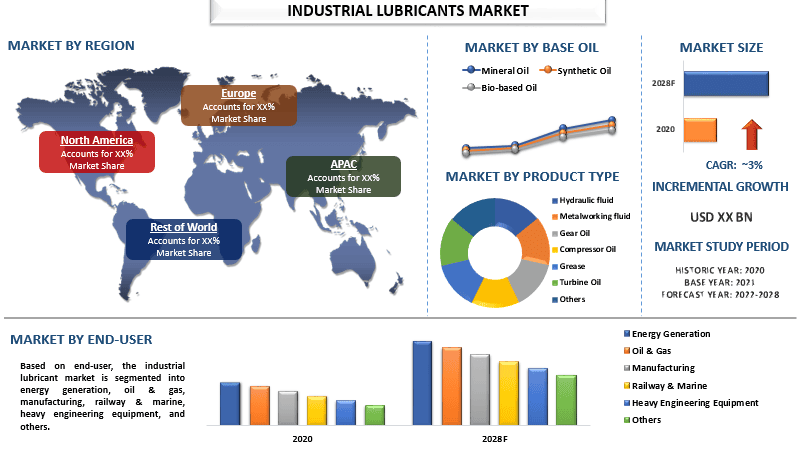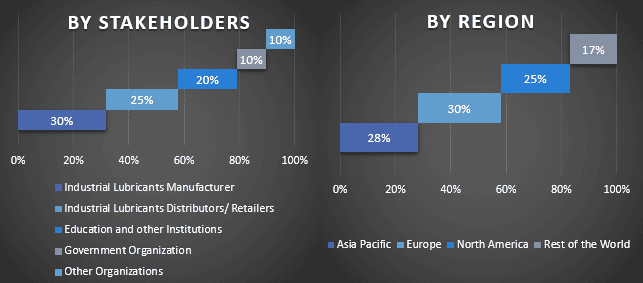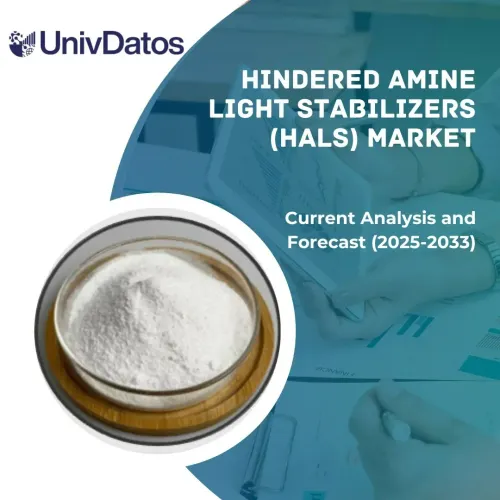
글로벌 산업용 윤활유 시장은 예측 기간 동안 3% 이상 상당한 성장률을 보일 것으로 예상됩니다.글로벌 산업용 윤활유 시장은 주로 다양한 산업 분야에서 복잡한 기계 및 도구의 채택 증가에 의해 주도됩니다. 윤활유의 주요 과제이자 가장 중요한 기능은 마찰을 줄이고 마모 방지 기능을 제공하여 기계 가동 시간을 연장하고 원자재를 보호하는 것입니다. 윤활유에 대한 인식은 소비자들이 자원 절약과 지속 가능성에 기여하면서 증가하고 있습니다. 마찰을 줄이는 역할은 필요한 에너지 투입량을 줄이고, 이 방식으로 배출량을 절감합니다. 따라서 전 세계적으로 시장 수요가 증가하고 있습니다.
BP Plc, Exxon Mobil Corporation, Fuchs Petrolub SE, Chevron Corporation, Idemitsu Kosan Co. Ltd., Lukoil Oil Co., PetroChina Co. Ltd., Total S.A., Royal Dutch Shell Plc, 및 BASF SE.
보고서에 제시된 통찰력
“기유 중 광유 부문은 예측 기간 동안 견고한 CAGR을 기록할 것으로 예상”
기유를 기반으로 산업용 윤활유 시장은 광유, 합성유 및 바이오 기반 오일로 세분화됩니다. 광유 부문은 상당한 시장 점유율을 차지합니다. 석유화학 성분과 올레오 화학 산업에서 자연적으로 수확 가능한 원료의 파생물이 환경 호환성과 일부 기술적 이점으로 인해 점점 더 많은 인정을 받고 있습니다.
“제품 유형 중 유압유 부문은 2020년에 시장에서 상당한 점유율을 차지할 것으로 예상”
제품 유형을 기준으로 산업용 윤활유 시장은 유압유, 금속 가공유, 기어 오일, 압축기 오일, 그리스, 터빈 오일 등으로 세분화됩니다. 이 중 유압유 부문은 2020년에 시장에서 상당한 점유율을 차지할 것으로 예상됩니다. 이는 다른 유형에 비해 저렴한 가격과 건설 산업의 수요 때문입니다. 중국과 같은 주거 부문의 건설 활동 증가와 인도의 인프라 개발 증가로 인해 건설 산업에서 산업용 윤활유에 대한 수요가 획기적인 시점에 있습니다..
“최종 사용자 중 석유 & 가스 부문은 2020년에 시장에서 상당한 점유율을 차지할 것으로 예상”
최종 사용자를 기준으로 산업용 윤활유 시장은 에너지 발전, 석유 & 가스, 제조, 철도 & 해양, 중장비 장비 및 기타로 분류됩니다. 이 중 석유 & 가스 산업은 글로벌 산업용 윤활유 시장에서 주요 점유율을 차지할 것으로 추정됩니다. 석유 & 가스 산업에서 육상 및 해상 활동은 극한의 온도 변화에 직면하여 유지 보수 및 수리를 위한 계획되지 않은 가동 중단이 필요합니다. 윤활유는 기계 부품의 수명을 최대화하고 에너지 효율성을 향상시키는 데 도움이 됩니다.
“아시아 태평양 지역이 시장에서 상당한 점유율을 차지할 것으로 예상”
아시아 태평양 지역은 예측 기간 동안 상당한 CAGR로 성장할 것으로 예상됩니다. 이는 주로 기유 이동 증가, 급속한 산업화 & 도시화, 인구 증가, 섬유, 화학, 식품 가공, 금속 가공 등 주요 최종 사용 산업의 높은 성장에 기인합니다. 또한 수작업을 줄이고 시간 단축 및 효율성 향상을 위해 다양한 기계 사용을 늘리기 위한 농업 부문의 투자가 증가하면서 시장을 견인할 것으로 예상됩니다.
이 보고서를 구매하는 이유:
- 이 연구에는 인증된 주요 산업 전문가가 검증한 시장 규모 및 예측 분석이 포함됩니다.
- 이 보고서는 전체 산업 성과에 대한 빠른 개요를 제공합니다.
- 이 보고서는 주요 비즈니스 재무, 제품 포트폴리오, 확장 전략 및 최근 개발에 중점을 두고 주요 산업 경쟁사에 대한 심층 분석을 다룹니다.
- 업계에서 우세한 동인, 제약, 주요 트렌드 및 기회에 대한 자세한 검토.
- 이 연구는 다양한 부문에 걸쳐 시장을 포괄적으로 다룹니다.
- 산업에 대한 심층적인 지역별 분석.
사용자 정의 옵션:
글로벌 산업용 윤활유 시장은 요구 사항 또는 기타 시장 부문에 따라 추가로 맞춤화할 수 있습니다. 이 외에도 UMI는 귀하가 고유한 비즈니스 요구 사항을 가질 수 있음을 이해하므로 귀하의 요구 사항에 완벽하게 맞는 보고서를 받으려면 언제든지 문의하십시오.
목차
산업용 윤활유 시장 분석을 위한 연구 방법론 (2022-2028)
글로벌 산업용 윤활유 시장의 채택을 생성하고 분석하기 위해 세 가지 주요 단계인 과거 시장 분석, 현재 시장 추정 및 글로벌 산업용 윤활유 시장의 미래 시장 예측이 수행되었습니다. 과거 시장 규모를 수집하고 현재 시장 규모를 추정하기 위해 광범위한 2차 연구가 수행되었습니다. 둘째, 이러한 통찰력을 검증하기 위해 수많은 결과와 가정이 고려되었습니다. 또한, 글로벌 산업용 윤활유 시장의 가치 사슬 전반에 걸쳐 산업 전문가들과 광범위한 1차 인터뷰도 진행되었습니다. 1차 인터뷰를 통해 시장 수치를 가정하고 검증한 후, 전체 시장 규모를 예측하기 위해 Top-Down/Bottom-Up 방식을 사용했습니다. 그 후, 시장 세분화 및 데이터 삼각 측량 방법을 채택하여 관련 산업의 세그먼트 및 하위 세그먼트의 시장 규모를 추정하고 분석했습니다. 자세한 방법론은 다음과 같습니다:
과거 시장 규모 분석
1단계: 2차 소스 심층 연구:
산업용 윤활유 시장의 과거 시장 규모를 얻기 위해 다음과 같은 회사 내부 소스를 통해 자세한 2차 연구가 수행되었습니다.연간 보고서 & 재무 제표, 성과 발표, 보도 자료 등,및 다음을 포함한 외부 소스저널, 뉴스 & 기사, 정부 간행물, 경쟁사 간행물, 부문 보고서, 타사 데이터베이스 및 기타 신뢰할 수 있는 간행물.
2단계: 시장 세분화:
산업용 윤활유 시장의 과거 시장 규모를 얻은 후, 주요 지역의 다양한 세그먼트 및 하위 세그먼트에 대한 과거 시장 통찰력 및 점유율을 수집하기 위해 자세한 2차 분석을 수행했습니다. 주요 세그먼트에는 기유, 제품 유형 및 최종 사용자가 포함됩니다. 또한 해당 지역의 테스트 모델의 전반적인 채택을 평가하기 위해 국가별 분석을 수행했습니다.
3단계: 요인 분석:
다양한 세그먼트 및 하위 세그먼트의 과거 시장 규모를 확보한 후, 산업용 윤활유 시장의 현재 시장 규모를 추정하기 위해 자세한요인 분석을 수행했습니다. 또한 다양한 기유, 제품 유형 및 최종 사용자 등 종속 및 독립 변수를 사용하여 요인 분석을 수행했습니다. 전 세계 산업용 윤활유 시장 부문에서 주요 파트너십, 인수 합병, 사업 확장 및 제품 출시에 대한 수요 및 공급 측면 시나리오에 대한 철저한 분석이 수행되었습니다.
현재 시장 규모 추정 및 예측
현재 시장 규모 측정:위의 3단계에서 얻은 실행 가능한 통찰력을 바탕으로 현재 시장 규모, 글로벌 산업용 윤활유 시장의 주요 업체 및 부문의 시장 점유율에 도달했습니다. 필요한 모든 점유율 분할 및 시장 분석은 위에 언급된 2차 접근 방식을 사용하여 결정되었으며 1차 인터뷰를 통해 검증되었습니다.
추정 & 예측:시장 추정 및 예측을 위해 동인 & 트렌드, 제약 및 이해 관계자가 사용할 수 있는 기회 등 다양한 요인에 가중치가 할당되었습니다. 이러한 요인을 분석한 후, 관련 예측 기술, 즉, Top-Down/Bottom-Up 방식을 적용하여 2028년까지 주요 시장 전반의 다양한 세그먼트 및 하위 세그먼트에 대한 시장 예측에 도달했습니다. 시장 규모를 추정하기 위해 채택된 연구 방법론은 다음과 같습니다:
- 수익(USD) 측면에서 업계의 시장 규모와 주요 시장 전반에서 산업용 윤활유 시장의 채택률
- 모든 시장 부문 및 하위 부문의 점유율, 분할 및 세분화
- 제공되는 제품 측면에서 글로벌 산업용 윤활유 시장의 주요 업체. 또한 빠르게 성장하는 시장에서 경쟁하기 위해 이러한 플레이어가 채택한 성장 전략
시장 규모 및 점유율 검증
1차 연구:주요 지역의 최고 경영진(CXO/VP, 영업 책임자, 마케팅 책임자, 운영 책임자, 지역 책임자, 국가 책임자 등)을 포함한 주요 의견 리더(KOL)와의 심층 인터뷰가 진행되었습니다. 1차 연구 결과는 요약되었고, 제시된 가설을 증명하기 위해 통계 분석이 수행되었습니다. 1차 연구의 입력은 2차 결과와 통합되어 정보를 실행 가능한 통찰력으로 전환했습니다.
다양한 지역의 주요 참여자 분할

시장 엔지니어링
데이터 삼각 측량 기술을 사용하여 전체 시장 추정을 완료하고 글로벌 산업용 윤활유 시장의 각 세그먼트 및 하위 세그먼트에 대한 정확한 통계 수치를 도출했습니다. 데이터는 글로벌 산업용 윤활유 시장에서 기유, 제품 유형 및 최종 사용 분야의 다양한 매개변수 및 동향을 연구한 후 여러 세그먼트 및 하위 세그먼트로 분할되었습니다.
글로벌 산업용 윤활유 시장 연구의 주요 목표
글로벌 산업용 윤활유 시장의 현재 및 미래 시장 동향이 연구에서 정확히 지적되었습니다. 투자자는 연구에서 수행된 정성적 및 정량적 분석을 기반으로 투자를 결정하는 데 사용할 수 있는 전략적 통찰력을 얻을 수 있습니다. 현재 및 미래 시장 동향은 지역 수준에서 시장의 전반적인 매력을 결정하여 산업 참여자가 미개척 시장을 활용하여 선점 이점을 얻을 수 있는 플랫폼을 제공했습니다. 연구의 다른 정량적 목표는 다음과 같습니다.
- 가치(USD) 측면에서 산업용 윤활유 시장의 현재 및 예측 시장 규모를 분석합니다. 또한 다양한 세그먼트 및 하위 세그먼트의 현재 및 예측 시장 규모를 분석합니다.
- 연구의 세그먼트에는 기유, 제품 유형 및 최종 사용 분야가 포함됩니다.
- 산업용 윤활유에 대한 규제 프레임워크의 정의 및 분석
- 다양한 중개인의 존재와 관련된 가치 사슬을 분석하고 업계의 고객 및 경쟁자 행동을 분석합니다.
- 주요 지역에 대한 산업용 윤활유 시장의 현재 및 예측 시장 규모를 분석합니다.
- 보고서에서 연구된 주요 지역 국가는 아시아 태평양, 유럽, 북미 및 기타 지역을 포함합니다.
- 산업용 윤활유 시장의 회사 프로필과 시장 참여자가 빠르게 성장하는 시장에서 유지하기 위해 채택한 성장 전략
- 산업의 심층 지역 수준 분석
관련 보고서
이 상품을 구매한 고객님들도 함께 구매하신 상품










